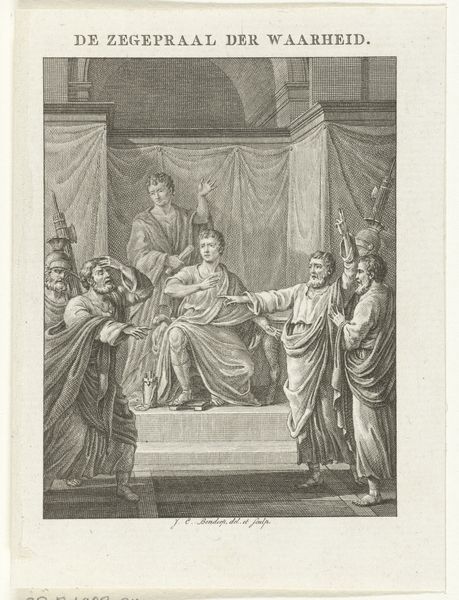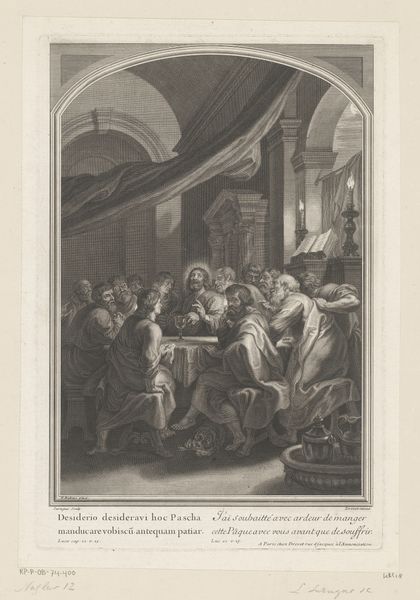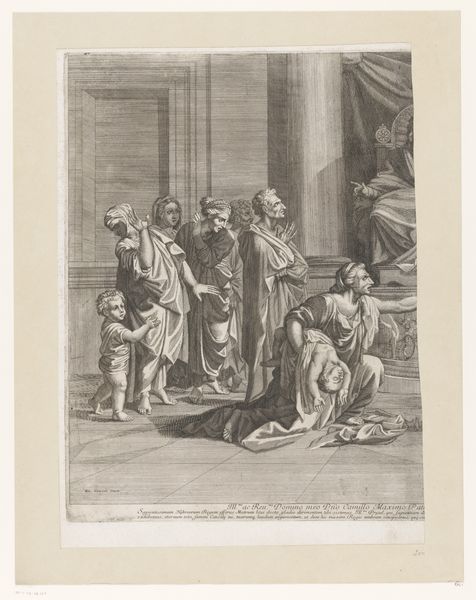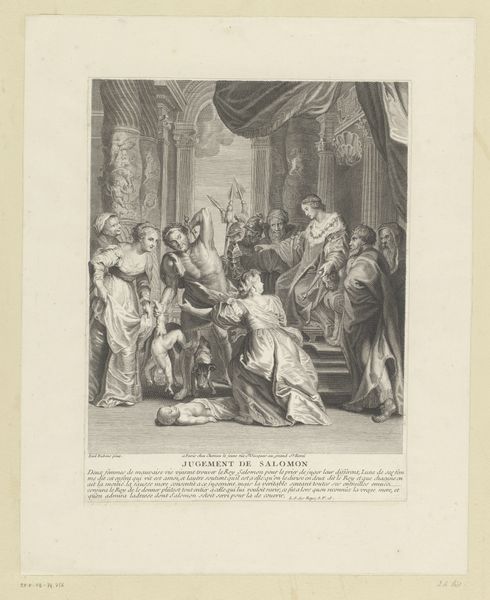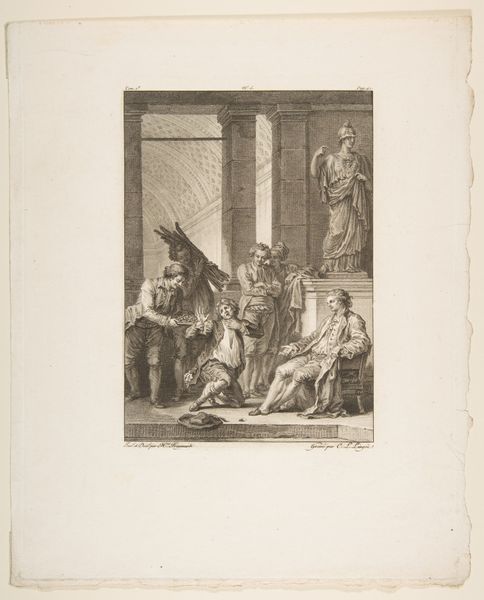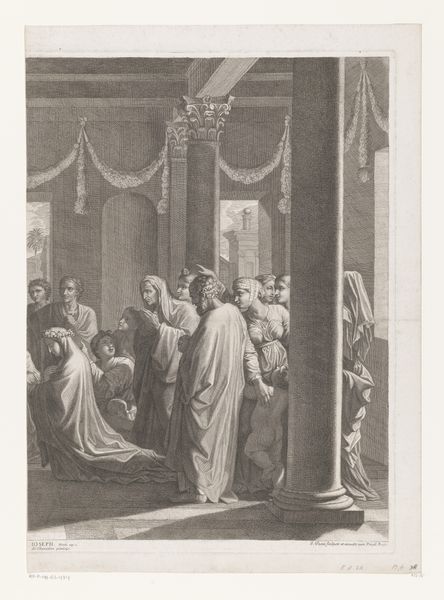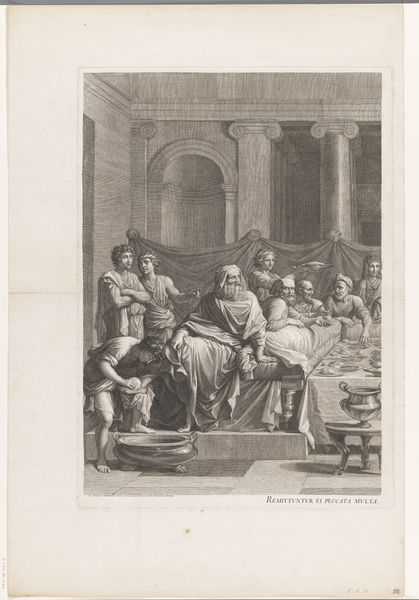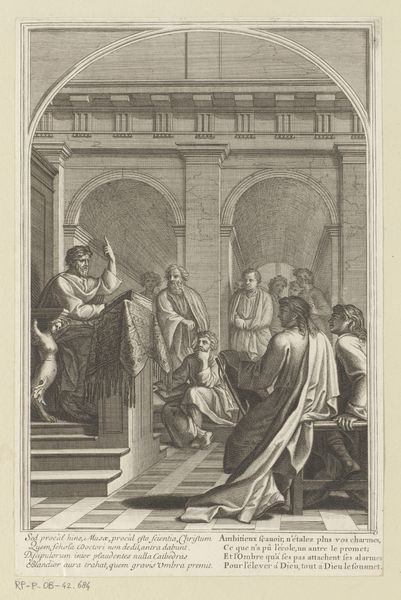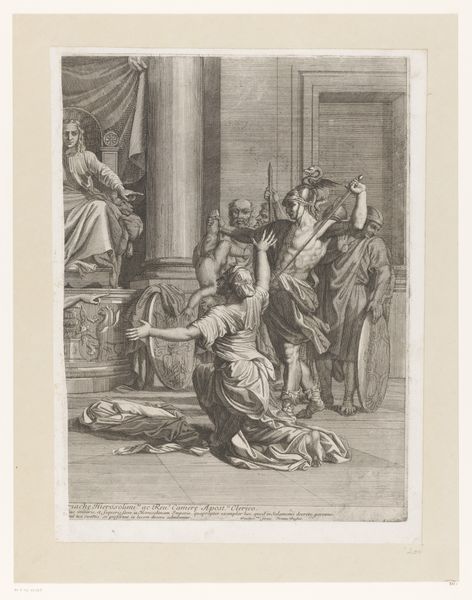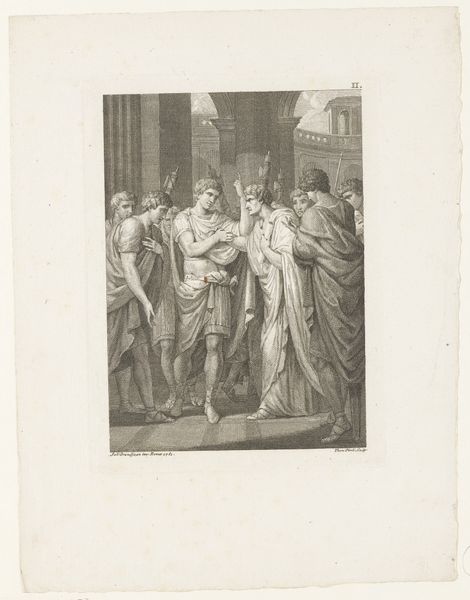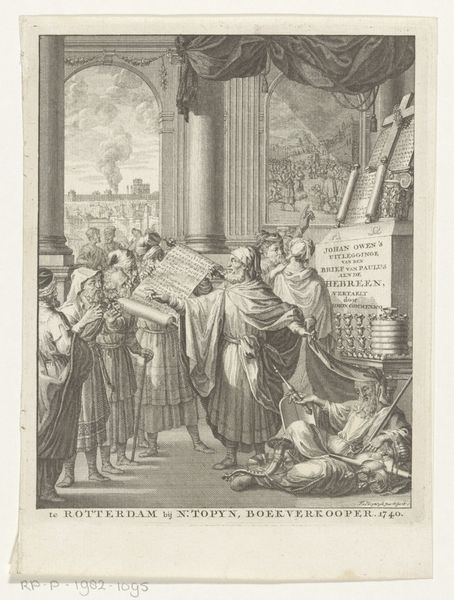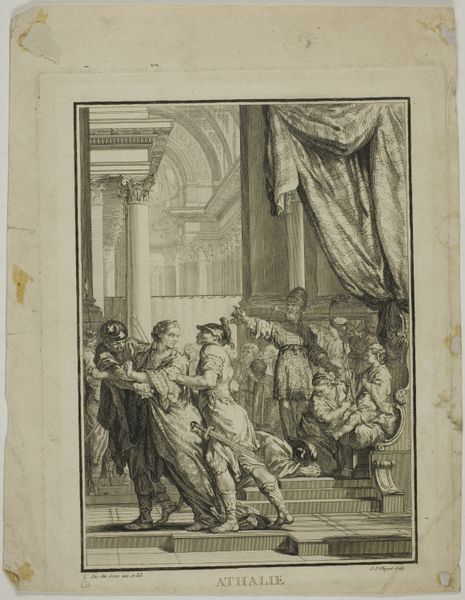
print, engraving
#
baroque
# print
#
figuration
#
line
#
history-painting
#
engraving
Dimensions: height 514 mm, width 394 mm
Copyright: Rijks Museum: Open Domain
Editor: This is Jean Pesne’s engraving, "The Marriage of Mary and Joseph (left part)," created sometime between 1680 and 1694. It depicts the biblical scene in great detail. I find it interesting how classical architecture frames the betrothal. What symbols or deeper meanings are embedded here? Curator: The careful rendering of architectural elements acts almost as a stage, framing the figures. Notice the garland; it's not just decorative. Garlands throughout history have signified celebration, yes, but also consecration, marking a sacred space for the joining of two entities. Do you see how the artist places the weight of the composition? Editor: Towards the right, where Joseph places the ring? It definitely draws the eye. Curator: Precisely. That gesture is pivotal. The ring itself! A closed circle – an ancient symbol of eternity and unbroken unity. Consider the material itself. In this era, even the choice of gold, or the addition of gems, would contribute to the meaning conveyed to its contemporary audience, signifying wealth, commitment, or spiritual value. Editor: That's fascinating! I hadn't considered how the materiality of even unseen details like the ring, can resonate so powerfully. Curator: Images were read differently. People understood visual language differently than we often do now. It’s easy for us to focus on aesthetics. But what does it tell you that, surrounded by witnesses, it is Joseph who does the ring gesture? Editor: It indicates his role as protector, the initiator of this bond... taking responsibility, perhaps? This artwork does invite more careful observation, focusing less on general beauty and more on detail. Curator: Precisely. We uncover cultural memory layer by layer, seeing how visual symbols, and the act of seeing itself, reflects deeper social, psychological and religious structures.
Comments
No comments
Be the first to comment and join the conversation on the ultimate creative platform.
